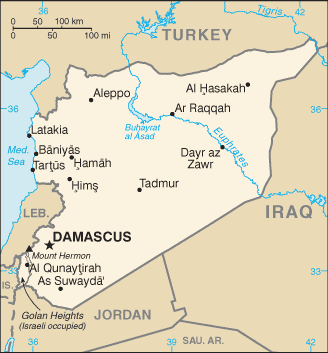Syria as it exists on a map today only dates back to the end of World War 1 and the breakup of the Ottoman Empire. Yet increasingly the “map version” of Syria is just a memory as the civil war is dividing the country into three distinct entities.
 Fighting in Homs Province is chasing Sunni supporters of the rebels northward, into rebel-held areas, while rebel offensives in Latakia are driving the nation’s Alawite minority south, into the area around Damascus. Even as this fight escalates, the rebel north is seeing growing fighting with Kurdish militias, which are trying to carve out a third, Kurdish entity in the northeast.
Fighting in Homs Province is chasing Sunni supporters of the rebels northward, into rebel-held areas, while rebel offensives in Latakia are driving the nation’s Alawite minority south, into the area around Damascus. Even as this fight escalates, the rebel north is seeing growing fighting with Kurdish militias, which are trying to carve out a third, Kurdish entity in the northeast.
In many ways this new era of three Syrias, all fighting one another, reflects divisions that existed 1,000 years ago in the area. At the time, the region around Damascus, which is now Assad government territory, was the northern extent of the Fatimid Caliphate, a Shi’ite empire.
The rest of modern Syria, at the time, had fallen under the sway of the Seljuq Sultanate, and was dominated by Sunnis. Though today’s third region, Syrian Kurdistan, did not exist entirely independently at the time, but the Marwanids, a Kurdish dynasty, where forever trying to carve out relative autonomy in the region.
That wasn’t exactly a period of stability either, with the three entities constantly fighting over territory, particularly Homs and Aleppo (as today), but the current war seems to be going to same way, with de facto three-way autonomy and ongoing clashes seemingly the direction that the stalemate is sending Syria toward.


